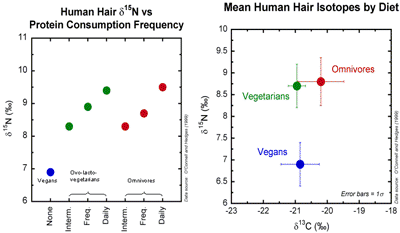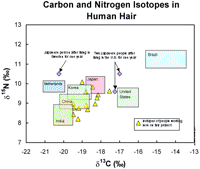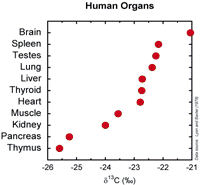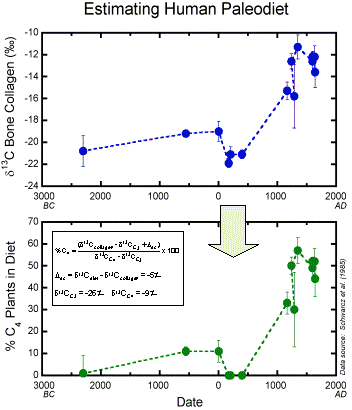HUMAN STUDIES: Animal Protein Consumption, International Differences,
Organ Differences and Paleodiet Changes Over Time
 |
Fig. 1. The d15N
and d13C values of human hair depend on how
much animal protein we eat. More frequent protein consumption
results in higher d15N and d13C.
Note the very low d15N values of vegans, who
eat no animal protein. View larger image.
|
 |
 |
Fig. 2. Average diets vary
among people living in different countries, and these differences
are recorded in the isotopic composition of our hair. Note
the isotopic shifts (particularly d13C) of
the Japanese people who lived in other countries for one year.
With a hair sample, one could reasonably guess where they
had lived! View larger image.
|
Fig. 3. The d13C
values of human organs vary widely. This is why isotope-related
diet studies need to compare similar organs and tissues among
individuals. View larger image.
|
 |
| Fig. 4. The d13C
values of collagen from human bones (both fossil and modern)
can be used to estimate the amount of C4 plants
(e.g., maize) versus C3 plants (e.g., wheat) in
the diet of native populations. The study above calculated
this percentage over the last 4000 years using a “mass
balance” formula with average values for C3
and C4 plants and the known isotopic offset between
a person’s diet and their bone collagen. The importance
of C4 plants in human diets has increased dramatically,
from less than ~10% before 500 AD to ~30-60% between 1000
AD and 1600 AD. |
|
|




